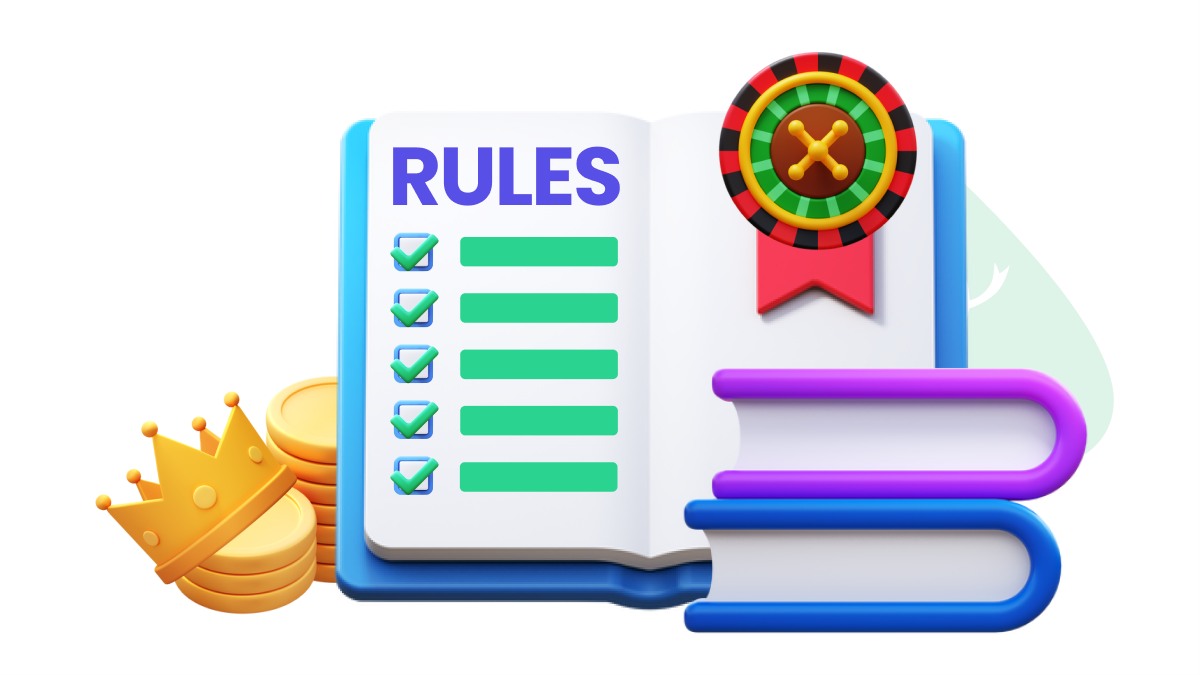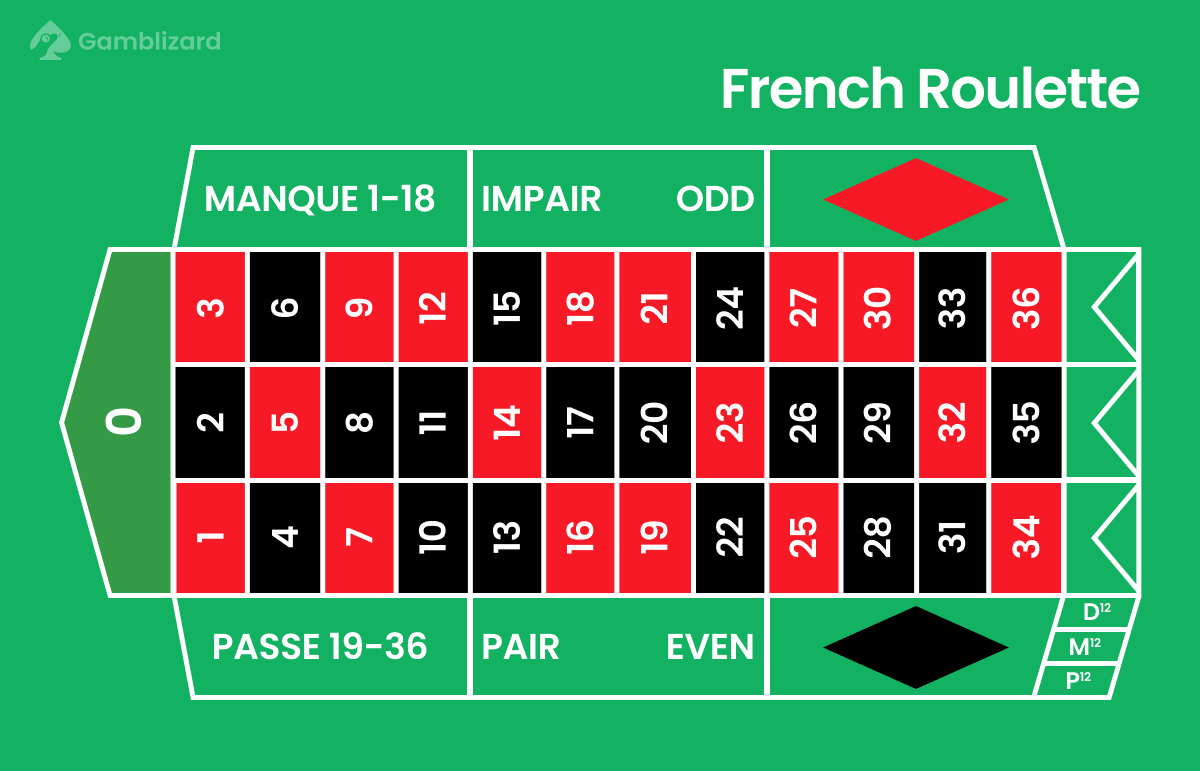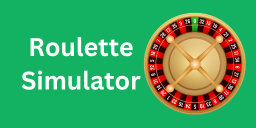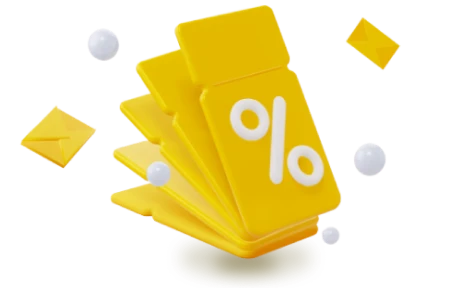French Roulette Guide
- What is French Roulette?
- What Are the Rules?
- Overview of the Table
- How to Place Bets
- The La Partage Rule
- The En Prison Rule
- What Types of Bets Can You Place?
- Inside Bets
- Outside Bets
- Odds and Payouts
- Strategies You Can Use
- Differences Between French and American Roulette
- Differences Between Online and Land-Based Roulette
- Getting Started
- Conclusion
For centuries, games of chance have attracted players, and some classics remain essential in today’s land-based and online casinos. Many table games have evolved over time, especially with the rise of online play, but French roulette has stayed remarkably close to its origins. In this guide, we’ll explore its history, rules, table layout, betting options, and key differences from other versions, along with practical tips for playing it online. If you’re new to the game entirely, you might also want to check our complete roulette guide to understand how different versions compare.
What is French Roulette?
French roulette dates back to the 1700s, when it became a pastime of the French aristocracy before spreading to the general public. Over time, European and American versions emerged, but the French variant remains closest to the original, with a single green zero and unique rules that benefit the player.
In its early American form, an “eagle” symbol was added to the wheel to increase the house advantage—thankfully, modern French tables avoid such additions. Today, you can find the game in both land-based casinos and online, often as a live dealer option that replicates the elegance of the original setup.
What Are the Rules?
One of the biggest advantages of this table game is its simple rules, clear mechanics, and the elegant atmosphere that often surrounds the rounds. Even if you’ve never played any version of roulette before, it won’t take more than a few minutes to understand how it works. Place your chips on the table, wait for the next round to begin, and remember that certain unique rules may apply during the game. We’ll explain everything below.
Table Layout and Racetrack
The French roulette table features the wheel at one end and the main betting area in front of players. Standard betting sections include numbers in red and black, with green reserved for zero. Alongside these is the “racetrack” or piste, a separate section for special call bets, written in French.
These racetrack bets allow you to cover specific sections of the wheel, such as Voisins du Zéro (“neighbours of zero”), Le Tiers du Cylindre (“a third of the wheel”), Jeu Zéro (“zero game”), and Orphelins (“orphans”). In live play, you can announce these bets to the dealer; online, you select them with one click.
Unique Rules
La Partage: If the ball lands on zero, half of all even-money bets (like red/black or odd/even) are returned to you, and the other half goes to the house. This cuts the house edge on these bets in half.
En Prison: If zero comes up on an even-money bet, your stake is “imprisoned” for the next spin. If it wins on the next round, your stake is returned with no profit or loss. If it loses, the bet is forfeited.
What Types of Bets Can You Place?
If you’ve played roulette before, perhaps in a version other than French, you’ll find that the betting options are generally the same. However, the French table offers a few extra special combinations, and some of the bet names are written in French. Keep an eye out for the following areas on the so-called “racetrack”:
- Voisins du Zero: This means “neighbors of zero” and is a bet on all the numbers surrounding zero on the wheel.
- Le Tiers du Cylindre: Meaning “a third of the wheel,” this bet covers the numbers on the opposite side of zero.
- Jeu Zero: This means “zero game” and is a bet on six numbers located next to zero in one direction.
- Orphelins: This means “orphans,” and this is a bet on the eight numbers not covered by the other groups above.
Inside Bets
These are the more standard bets, familiar to most roulette players. But if you’re new to the game and want to learn about the betting options in advance, we’ll break them down for you. These are known as inside bets, where chips are placed on or between the various numbers from 1 to 36 (or on the zero):
- Single Number: A bet on one specific number.
- Split: A bet on two numbers (the chip is placed on the line between them).
- Street: A bet on three consecutive numbers.
- Corner: A bet on four numbers that meet at a corner (the chip is placed in the shared corner).
- Six Line: A bet on six consecutive numbers.
Outside Bets
Inside bets tend to offer lower odds of winning but higher payouts, so it’s usually best to focus on outside bets until you’re more confident and ready to explore various strategies. On the outside of the table, you’ll find broader bets with higher odds of winning but smaller payouts:
- Red or Black: Bet on whether the next number will be red or black.
- Odd or Even: Bet on whether the next number will be odd or even.
- Low or High: Bet on either all low numbers (1-18) or all high numbers (19-36).
- Dozen: Bet on one of three groups of 12 numbers (1-12, 13-24, or 25-36).
- Columns: Bet on one of the three columns of 12 numbers.
Odds and Payouts
Roulette uses mathematical calculations to balance risk with reward, with a slight house edge due to the green zero. For example, the bet on red or black is almost 50/50 since all numbers are either red or black, except for the zero. If you win, your payout is double your bet! Here’s a simple overview of the odds and payouts:
- Single Number: 1/36 chance of winning, 35x payout
- Split: 1/17.5 chance of winning, 17x payout
- Street: 1/11.3 chance of winning, 11x payout
- Corner: 1/8.25 chance of winning, 8x payout
- Six Line: 1/5.16 chance of winning, 5x payout
- Red or Black: 1/2.05 chance of winning, 2x payout
- Odd or Even: 1/2.05 chance of winning, 2x payout
- Low or High: 1/2.05 chance of winning, 2x payout
- Dozen: 1/3.20 chance of winning, 3x payout
- Columns: 1/3.20 chance of winning, 3x payout
Strategies You Can Use
Ever since roulette was introduced, people have tried to come up with a “foolproof” strategy or system that guarantees winnings. It’s important to note that there is no way to beat the mathematical algorithms in place, which gives the house a slight advantage. However, following a suitable betting system can be fun, and it helps you manage your budget better. Here are a few popular strategies:
The Martingale System
This is likely the simplest system—here, you double your bet after every loss and return to your initial bet when you win. This method is designed to eventually bring you back to profit or, at the very least, avoid significant losses.
-
Pros
- In theory, you never lose in the long run.
-
Cons
- Your bets can quickly grow large if you hit a losing streak.
The Reverse Martingale
As the name suggests, this strategy is the reverse of the original system—you double your bet after each win and return to the starting bet after a loss. The goal is to capitalize on winning streaks.
-
Pros
- You avoid losing streaks more easily.
-
Cons
- You need a large budget to maximize its effectiveness.
The D’Alembert System
With this system, you start with a basic bet and increase it by the same amount after each loss while decreasing it by the same amount after each win. The aim is to balance out wins and losses over time.
-
Pros
- Simple and easy to follow.
-
Cons
- The potential for growth is minimal compared to other systems.
The Fibonacci System
This system is based on the famous Fibonacci sequence (1, 2, 3, 5, 8, 13, 21, 34, and so on). After each loss, you move forward in the sequence, and after each win, you move two steps back.
-
Pros
- It’s a fun system that adds an element of strategy.
-
Cons
- The stakes can get high quickly, requiring larger bets.
The James Bond System
This system involves covering various parts of the table to offset potential losses. The idea is to bet 1 unit on zero, 5 units on numbers 13-18, and 14 units on high numbers (19-36).
-
Pros
- A fun strategy with a wide coverage of numbers.
-
Cons
- The system can be quite dull after a while.
Differences Between French and American Roulette
French roulette’s single zero and player-friendly rules give it a clear mathematical advantage over American roulette, which has an extra double zero. This increases the house edge to about 5.26% in the American version, compared to 2.7% or less for French tables. Always choose single-zero tables when possible.
Differences Between Online and Land-Based Roulette
Although you can find roulette at nearly every land-based casino around the world (with the exception of some U.S. cities where American roulette dominates), most people now prefer playing online. There are many reasons for this, and we’ll outline the pros and cons so you can decide for yourself:
-
Benefits of Playing Online
- You can play from the comfort of your home.
- No travel costs involved.
- You have a wide selection of tables to choose from.
- You can earn plenty of bonus money.
- There’s no pressure from the surrounding environment.
-
Downsides of Playing Online
- You miss out on the unique casino atmosphere.
- You don’t get the social experience.
- You can’t physically handle chips or hear the wheel spin.
- You won’t get to visit new cities or countries.
- You don’t get your winnings instantly.
However, we should mention that part of the social aspect is available online—thanks to advancements in live casino games, you can now enjoy real-time games with actual dealers and interact with other players via chat.
Getting Started
Since this popular table game is available at practically every top-rated online casino, you’re only a few minutes away from starting your first round—whether on your computer or mobile device. Here’s how to get started:

Choose a licensed and reliable online casino.

Complete the registration process and log into your account.

Make a small deposit and activate your welcome bonus.

Browse the game selection and find the French roulette table.

Place your bet and watch the wheel spin!
Conclusion
French roulette combines history, elegance, and favourable rules, making it a top choice for players who want both entertainment and strong odds. By understanding its unique bets, special rules, and sensible bankroll strategies, you can enjoy the game confidently, whether at a real table or online.
For more advice on staying in control while playing, visit our overcoming problematic behaviour page.


















